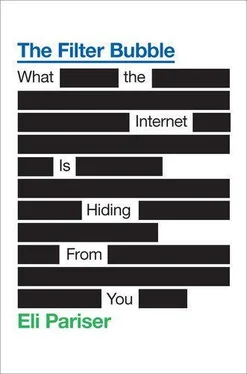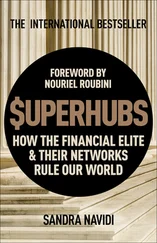When he reported this finding to his boss, the investor wasn’t interested. Books seemed like a kind of backward industry in an information age. But Bezos couldn’t get the idea out of his head. Without a physical limit on the number of books he could stock, he could provide hundreds of thousands more titles than industry giants like Borders or Barnes & Noble, and at the same time, he could create a more intimate and personal experience than the big chains.
Amazon’s goal, he decided, would be to enhance the process of discovery: a personalized store that would help readers find books and introduce books to readers. But how?
Bezos started thinking about machine learning. It was a tough problem, but a group of engineers and scientists had been attacking it at research institutions like MIT and the University of California at Berkeley since the 1950s. They called their field “cybernetics”—a word taken from Plato, who coined it to mean a self-regulating system, like a democracy. For the early cyberneticists, there was nothing more thrilling than building systems that tuned themselves, based on feedback. Over the following decades, they laid the mathematical and theoretical foundations that would guide much of Amazon’s growth.
In 1990, a team of researchers at the Xerox Palo Alto Research Center (PARC) applied cybernetic thinking to a new problem. PARC was known for coming up with ideas that were broadly adopted and commercialized by others—the graphical user interface and the mouse, to mention two. And like many cutting-edge technologists at the time, the PARC researchers were early power users of e-mail—they sent and received hundreds of them. E-mail was great, but the downside was quickly obvious. When it costs nothing to send a message to as many people as you like, you can quickly get buried in a flood of useless information.
To keep up with the flow, the PARC team started tinkering with a process they called collaborative filtering, which ran in a program called Tapestry. Tapestry tracked how people reacted to the mass e-mails they received—which items they opened, which ones they responded to, and which they deleted—and then used this information to help order the inbox. E-mails that people had engaged with a lot would move to the top of the list; e-mails that were frequently deleted or unopened would go to the bottom. In essence, collaborative filtering was a time saver: Instead of having to sift through the pile of e-mail yourself, you could rely on others to help presift the items you’d received.
And of course, you didn’t have to use it just for e-mail. Tapestry, its creators wrote, “is designed to handle any incoming stream of electronic documents. Electronic mail is only one example of such a stream: others are newswire stories and Net-News articles.”
Tapestry had introduced collaborative filtering to the world, but in 1990, the world wasn’t very interested. With only a few million users, the Internet was still a small ecosystem, and there just wasn’t much information to sort or much bandwidth to download with. So for years collaborative filtering remained the domain of software researchers and bored college students. If you e-mailed ringo@media.mit.edu in 1994 with some albums you liked, the service would send an e-mail back with other music recommendations and the reviews. “Once an hour,” according to the Web site, “the server processes all incoming messages and sends replies as necessary.” It was an early precursor to Pandora; it was a personalized music service for a prebroadband era.
But when Amazon launched in 1995, everything changed. From the start, Amazon was a bookstore with personalization built in. By watching which books people bought and using the collaborative filtering methods pioneered at PARC, Amazon could make recommendations on the fly. (“Oh, you’re getting The Complete Dummy’s Guide to Fencing ? How about adding a copy of Waking Up Blind: Lawsuits over Eye Injury ?”) And by tracking which users bought what over time, Amazon could start to see which users’ preferences were similar. (“Other people who have similar tastes to yours bought this week’s new release, En Garde! ”) The more people bought books from Amazon, the better the personalization got.
In 1997, Amazon had sold books to its first million customers. Six months later, it had served 2 million. And in 2001, it reported its first quarterly net profit—one of the first businesses to prove that there was serious money to be made online.
If Amazon wasn’t quite able to create the feeling of a local bookstore, its personalization code nonetheless worked quite well. Amazon executives are tight-lipped about just how much revenue it’s brought in, but they often point to the personalization engine as a key part of the company’s success.
At Amazon, the push for more user data is never-ending: When you read books on your Kindle, the data about which phrases you highlight, which pages you turn, and whether you read straight through or skip around are all fed back into Amazon’s servers and can be used to indicate what books you might like next. When you log in after a day reading Kindle e-books at the beach, Amazon is able to subtly customize its site to appeal to what you’ve read: If you’ve spent a lot of time with the latest James Patterson, but only glanced at that new diet guide, you might see more commercial thrillers and fewer health books.
Amazon users have gotten so used to personalization that the site now uses a reverse trick to make some additional cash. Publishers pay for placement in physical bookstores, but they can’t buy the opinions of the clerks. But as Lanier predicted, buying off algorithms is easy: Pay enough to Amazon, and your book can be promoted as if by an “objective” recommendation by Amazon’s software. For most customers, it’s impossible to tell which is which.
Amazon proved that relevance could lead to industry dominance. But it would take two Stanford graduate students to apply the principles of machine learning to the whole world of online information.
As Jeff Bezos’s new company was getting off the ground, Larry Page and Sergey Brin, the founders of Google, were busy doing their doctoral research at Stanford. They were aware of Amazon’s success—in 1997, the dot-com bubble was in full swing, and Amazon, on paper at least, was worth billions. Page and Brin were math whizzes; Page, especially, was obsessed with AI. But they were interested in a different problem. Instead of using algorithms to figure out how to sell products more effectively, what if you could use them to sort through sites on the Web?
Page had come up with a novel approach, and with a geeky predilection for puns, he called it PageRank. Most Web search companies at the time sorted pages using keywords and were very poor at figuring out which page for a given word was the most relevant. In a 1997 paper, Brin and Page dryly pointed out that three of the four major search engines couldn’t find themselves. “We want our notion of ‘relevant’ to only include the very best documents,” they wrote, “since there may be tens of thousands of slightly relevant documents.”
Page had realized that packed into the linked structure of the Web was a lot more data than most search engines made use of. The fact that a Web page linked to another page could be considered a “vote” for that page. At Stanford, Page had seen professors count how many times their papers had been cited as a rough index of how important they were. Like academic papers, he realized, the pages that a lot of other pages cite—say, the front page of Yahoo—could be assumed to be more “important,” and the pages that those pages voted for would matter more. The process, Page argued, “utilized the uniquely democratic structure of the web.”
Читать дальше











